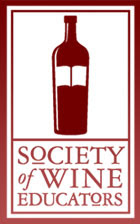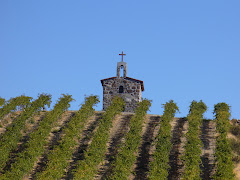
So last time, I spoke to you about the Muscadet AOC within the Loire Valley, which is often referred to as the Pays Nantais (which takes its name from the city of Nantes). Today’s post, we talk about the Anjou-Saumur. The Anjou-Saumur inhabits the area surrounding the cities of Angers and Saumur in the Maine et Loire department. There is a broad spectrum of wines produced here – red, white, rosé and sparkling wines. The red grape varieties are primarily Cabernet Franc, Cabernet Sauvignon and Malbec (known here as Cot). The primary white grape is Chenin Blanc (known here sometimes as Pineau de la Loire), with some Sauvignon Blanc and Chardonnay grown as well.
The red appellations include Anjou Rouge and Saumur Rouge, both comprised of the Cabernets Franc and Sauvignon, Anjou-Gamay (made with Gamay grapes), and Saumur-Champigny (made also with Cabs Franc and Sauvignon). The latter appellation is considered the best amongst Loire Valley’s red wines.
The white appellations include Anjou Blanc and Saumur Blanc, made up of at least 80% Chenin Blanc, and Savennières, 100% Chenin Blanc and considered one of the world’s best dry Chenin.

The red appellations include Anjou Rouge and Saumur Rouge, both comprised of the Cabernets Franc and Sauvignon, Anjou-Gamay (made with Gamay grapes), and Saumur-Champigny (made also with Cabs Franc and Sauvignon). The latter appellation is considered the best amongst Loire Valley’s red wines.
The white appellations include Anjou Blanc and Saumur Blanc, made up of at least 80% Chenin Blanc, and Savennières, 100% Chenin Blanc and considered one of the world’s best dry Chenin.
Rosés abound here, for there are 4 major appellations for blush, with each region boasting different styles: Rosé de Anjou, comprised mostly of the grape Grolleau and somewhat sweet; Cabernet de Saumur and Cabernet d’Anjou, both a bit sweet and made up of Cabernets Franc and Sauvignon; and Rosé de Loire, a dry style that must contain at least 30% Cabernet.
There are sweet wines of great renown as well, coming from the Coteaux du Layon, and it’s subregions Bonnezeaux and Quarts-de-Chaume. All of the wines from these AOCs are made up entirely of Chenin Blanc, and can be quite long-lived. The area of the Coteaux du Layon lies along the Layon tributary of the Loire River, and is comparable to Sauternes, in that it possesses the right climate and conditions for noble rot.
Saumur is the AOC known also for its sparkling wines. Saumur Mousseaux AOC is comprised of at least 80% Chenin Blanc, while the rosés are made entirely of Cabernet. These wines can be dry or semi-sweet. There are also some pétillant versions with have the CO₂ of the sparklers.

Within the Savenniéres, one particular producer, the much venerated N. Joly produces some of the world’s most remarkbable Chenin Blancs, and Joly himself is hailed as the preeminent leader of biodynamic farming. His most affordable wine is the Les Clos Sacré, a stunning Chenin Blanc that usually possesses a cellar potential of 5-10 years.
Next installment, we’ll touch on the wines of Touraine, Bourgueil and Vouvray.











No comments:
Post a Comment